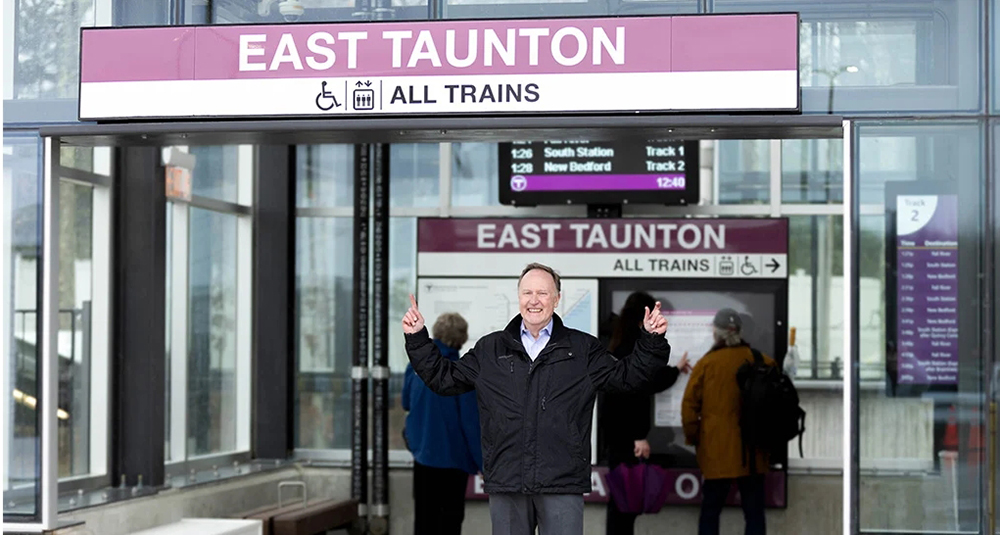News:
Spotlight Content
Posted: September 26, 2007
An introduction to Standard & Poor's tenant-in-common sponsor ranking system
Standard & Poor's (S&P) is a globally recognized financial services company that provides ratings, economic research, and benchmark indices (e.g., the S&P 500 Index) for various financial products and companies including bonds, securitized pools, mutual funds, and most recently, the sponsors of securitized tenant-in-common (TIC) offerings. The new ranking system, unveiled during the first half of 2007, is one of several recent developments in the TIC industry reflecting the growth and maturity of an industry that largely began five years ago.
The primary purpose of S&P's rating system is to provide an independent evaluation of financial products, thereby bringing more transparency to capital markets. The S&P TIC sponsor ranking system has the potential to significantly improve the level of disclosure and transparency in the TIC industry. The ranking system will provide a mechanism enabling investors and their representatives to make better, more informed investment decisions when contemplating securitized TIC offerings. The ultimate impact of this new ranking system will depend in large part on the TIC industry's reaction to its existence. Proponents of the new ranking system will likely include, at a minimum:
* Broker-dealer firms active in the TIC industry that may encourage or require the TIC sponsors with whom they do business (or with whom they are considering doing business) to participate in the process as part of their regular due diligence and compliance efforts;
* Industry associations such as the Tenant-In-Common Association (TICA) that may encourage participation in the ranking process; and
* Lenders active in the TIC industry that might require participation in the ranking process, or offer some form of inducement for TIC sponsors who do participate and receive a specified ranking.
The S&P ranking system will prove most useful if there is wide acceptance in the industry and meaningful participation by TIC sponsors.
The ranking criteria consider a sponsor's experience in the real estate and TIC industries, performance and procedures related to property management and asset management, and reporting practices. There are five separate rankings ranging from very strong to weak. A sponsor can only attain a very strong or strong ranking if it has been in business for three or more years, conducted 12 or more securitized TIC offerings within the past three years, and syndicated at least $100 million in equity. The sponsor ranking is based upon a point system. Criteria in the industry experience category is objective and accounts for 50% of the total possible points. The sponsor's level of real estate and TIC experience, consistency in meeting projections and any negative litigation or criminal activity affect the score in this category. Criteria in the property management and asset management category is subjective and accounts for 30% of the total possible points. A sponsor's property management policies and procedures, management oversight and reserves maintenance affect the score in this category. Criteria in the reporting practices category is both objective and subjective and accounts for 20% of the total possible points. A sponsor's responsiveness to property tenants and investors, punctual delivery of tax information, monthly reports and income checks and the comprehensiveness and ease of understanding of the monthly reports affect the score in this category.
S&P's sponsor evaluation process consists of three phases, each of which is estimated to take two weeks to complete. A sponsor ranking is valid for one year. Currently there is an initial fee of $35,000 charged by S&P which includes a semiannual ranking update. In Phase I, the TIC sponsor delivers information regarding the sponsor, its experience, and its business practices. For a sample due diligence checklist designed to help a TIC sponsor prepare for the first phase of the process, please contact the authors.
Phase II of the process focuses on the sponsor's property and asset management functions. S&P will evaluate both the oversight and reporting functions as well as the day-to-day management capability of the sponsor's local property managers (whether an affiliate or a contracted third party).
Phase III consists of a site visit by an S&P analyst and covers any follow up concerning the information previously reviewed and/or learned about the sponsor. The analyst will complete a mathematical computation to determine the recommended ranking. A separate committee will consider the analyst's recommendation and vote on the final ranking. The evaluation and ranking are sent to the sponsor for confirmation of all factual information before the public release of the ranking report. Once a ranking is issued, it will be reviewed and updated semiannually.
As the S&P ranking system gains acceptance, the ranking criteria could impact the manner in which TIC sponsors conduct business. As a general matter, TIC sponsors may find themselves operating in a more formal and institutional manner consistent with the criteria necessary to earn a high ranking under S&P's ranking system. Financial underwriting and projections may become more conservative as 63% of the sponsor experience category score rests upon whether sponsors meet their projected net operating income and cash-on-cash return targets on a deal-by-deal basis. Sponsors may also increase property management oversight and formalize operating policies and procedures. Investor communications may also become more comprehensive and easier to comprehend.
A few suggestions for improving a TIC sponsor's chance of obtaining a favorable sponsor ranking would include:
1. Developing reasonable and achievable projections;
2. Careful financial underwriting and management of reserves;
3. Documenting property management oversight procedures;
4. Asking investors to evaluate reports and comment on how to make them more understandable and user-friendly;
5. Consistently delivering outstanding customer service; and
6. Recruiting and retaining employees with industry experience and a high level of integrity.
The S&P TIC sponsor ranking system presents an opportunity for sponsors to distinguish themselves. As legal counsel to nearly two dozen TIC sponsors, the Real Estate Securities Group at Hirschler Fleischer believes this new ranking process will benefit the TIC industry.
Eric Perkins, Esq., is a principal at Hirschler Fleischer and Katharine Schkloven, Esq., is with Hirschler Fleischer, Richmond, Va.
Tags:
Spotlight Content
MORE FROM Spotlight Content
Check out the New England Real Estate Journal's 2025 Fall Preview Spotlight
NEREJ’s Fall Preview is Out Now!
Explore our Fall Preview Spotlight, featuring exclusive Q&As with leading commercial real estate professionals and in-depth byline articles on today’s most relevant market topics. Gain insight into the trends, challenges, and opportunities shaping New England’s commercial real estate landscape this fall.
Explore our Fall Preview Spotlight, featuring exclusive Q&As with leading commercial real estate professionals and in-depth byline articles on today’s most relevant market topics. Gain insight into the trends, challenges, and opportunities shaping New England’s commercial real estate landscape this fall.

Quick Hits
Columns and Thought Leadership

How long should I hold a property for it to qualify as an investment property in connection with a 1031 tax-deferred exchange? - by Brendan Greene and Mark McCue
Internal Revenue Code (IRC) Section 1031 provides “No gain or loss shall be recognized on the exchange of property held for productive use in a trade or business or for investment if such property is exchanged solely for property of like kind which is to be held

How do we manage our businesses in a climate of uncertainty? - by David O'Sullivan
These are uncertain times for the home building industry. We have the threat of tariffs mixed with high interest rates and lenders nervous about the market. Every professional, whether builder, broker, or architect, asks themselves, how do we manage our business in today’s climate? We all strive not just to succeed, but

Shallow-bay wins on 495/128: A renewal-driven market with a thin pipeline - by Nate Nickerson
The Boston industrial market entered mid-2025 in a bifurcated state. Large-block vacancy remains elevated, while shallow-bay along the 495/128 corridor continues to prove resilient. Fieldstone’s focus on this geography positions us squarely in the middle of a renewal-driven, supply-constrained

30 years on South Coast Rail: A journey to connect Southeastern Mass. with commuter rail - by Rick Carey
On March 24, 2025, a dream more than three decades in the making became a reality with the launch of the Massachusetts Bay Transportation Authority’s (MBTA) South Coast Rail commuter service. This milestone marks the completion of a project that overcame numerous starts and stops, including changes in leadership










.png)
